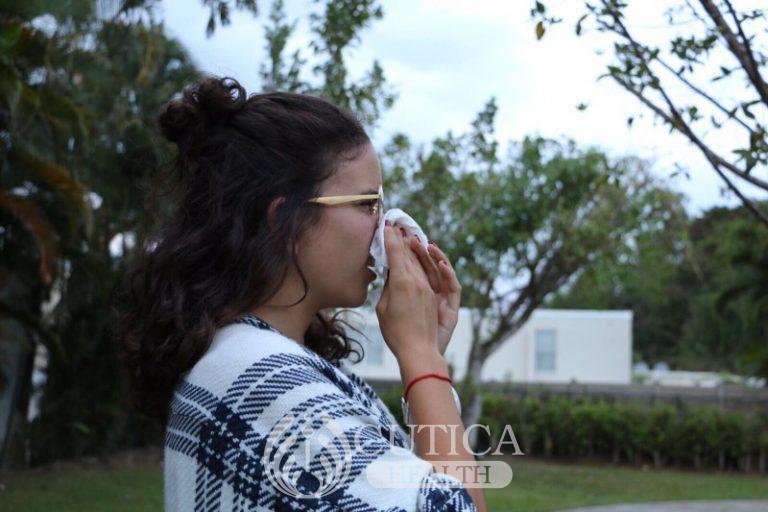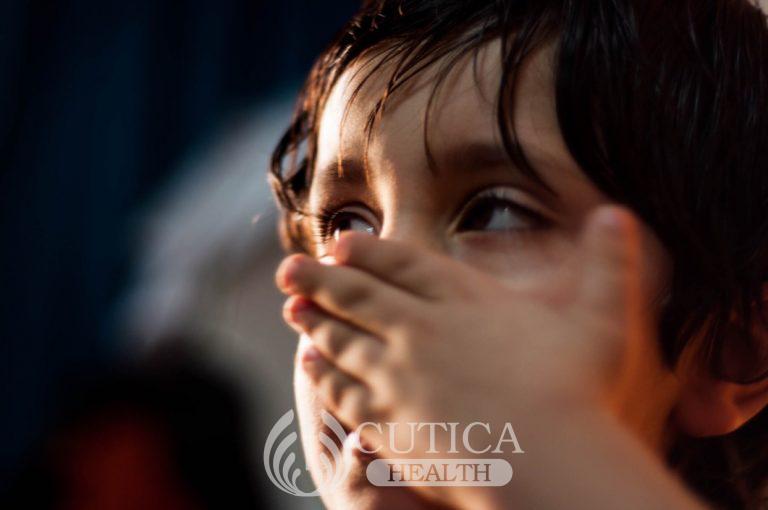
Ryan is a playful 5-year-old boy. One Saturday morning, he woke up with nasal congestion. It is common for Ryan to suffer allergies whenever it’s chilly. His mother had anti-allergy syrup and nasal spray, which she gave to relieve the allergy. Throughout that day, Ryan kept nose-picking as it felt itchy inside. The following day, when traveling back home, Ryan had a nose bleed that lasted about 5 minutes. His mother was concerned since he never had a bloody nose before. Although it had stopped, Ryan’s mother called his doctor about it to inquire what would have caused it, what to do to prevent it from ever happening again.
Nose bleeding – What is it?
Nose bleeding is when blood flows out from the nose after a blood vessel is damaged. The medical term for nose bleeding is epistaxis.
Types of nosebleeds

Anterior (Front) nosebleeds are the commonest in children. Anterior nose bleeding is blood flowing out from the front area close to the nostrils. This area has fine blood vessels that are easily injured, and cause a nosebleed that could be one-sided.
Posterior (Back) nosebleed is from a deeper inner area in the nose. Both nostrils bleed, and blood flows down at the back of the throat even when the child is sitting upright or standing. It is uncommon in children.
Causes of nose bleeding in children
Anterior nose bleeding is commonly precipitated by irritation or inflammation of the blood vessels in the nose.
These irritants include:
- Dry nostrils from dry or cold climates
- Nasal allergies
- Sinusitis from flu/cold causing the inflammation of blood vessels
- Picking the nose
- Blowing the nose too hard
- Nasal polyps – are soft protrusions that look like grapes that line the nasal canal or sinuses.
Another cause of nosebleed in children is trauma. Depending on the extent of the injury, it may cause posterior nosebleeds and last longer.
Less common causes of nose bleeding in children include, bleeding disorders, malformation of blood vessels, heart disease, blood thinners, and cancer.
Symptoms and when to see a doctor

Blood flowing out the nose is the main symptom to look out for.
The child should see a doctor if:
- Nose bleeding does not stop after applying pressure on the nose for about 20 minutes.
- The nose bleeding happens repeatedly
- You notice that the child is prone to bruising easily.
- Bleeds heavily from small bruises, minor wounds, or also has bleeding gums.
- The child may have something in their nose
- The nosebleed deviates from a familiar pattern
Urgently go to the hospital if;
- The nosebleed is from a fall or blow to the head or face.
- The child is heavily bleeding and has headache, dizziness, or passes out.
- The child has other symptoms like a fever.
- The child is on a blood thinner or has a history of bleeding disorder.
- The child coughs out or vomits blood.
How to manage nose bleeding at home
- Try and stay calm, comfort, or reassure your child.
- Let the child sit up and tilt the head forward slightly. The child should avoid lying down or leaning backward to prevent swallowing blood, which may irritate the stomach resulting in vomiting.
- Firmly pinch the soft areas of the child’s nose or apply a cold compress on the nasal bridge.
- Refrain from letting go of the pinch to check if bleeding has stopped. Keep the nose pinch for about 10 minutes together with the cold compress.
- Do not put any cloth or tissue into the nose.
- After 10 minutes, if bleeding has not stopped, repeat the steps above.
- If the nosebleed does not stop after a second try, call the doctor or visit the nearest hospital.
Medical Treatment
There are various treatment options for urgent and severe cases of nose bleeding in children. Once the root cause is determined, the doctor can opt for; nasal packing with medicated gauze or seal the blood vessels with silver nitrate or by cauterizing.
In other cases, the child may need surgery to correct abnormal blood vessels.
How to prevent nose bleeding in children

Here are tips to prevent nose bleeding in children.
- Train your child not to pick the nose, and how to blow the nose gently. Also, keep the fingernails cut short to avoid hurting the nostrils from nose-picking.
- To avoid drying inside the nose, moisturize the lining of the nose with a safe oil, nasal spray, or gel, and use a cool-mist humidifier (vaporizer) during the cold season.
- Consult the doctor early when the child develops on an allergy, nasal congestion, flu, or cold that may trigger nosebleeds.
- Encourage your child to play safely and wear protective equipment during activities that could result in a nose injury.
- Do not smoke around your child or leave the child around a person smoking.
Conclusion
Even with precautionary measures, your child may occasionally get a nosebleed. It may be scary when it happens; however, keep calm and do not panic. The nosebleed may stop effortlessly or in a few minutes with minimal intervention. The great news is most children outgrow nose bleeding in their teens.












